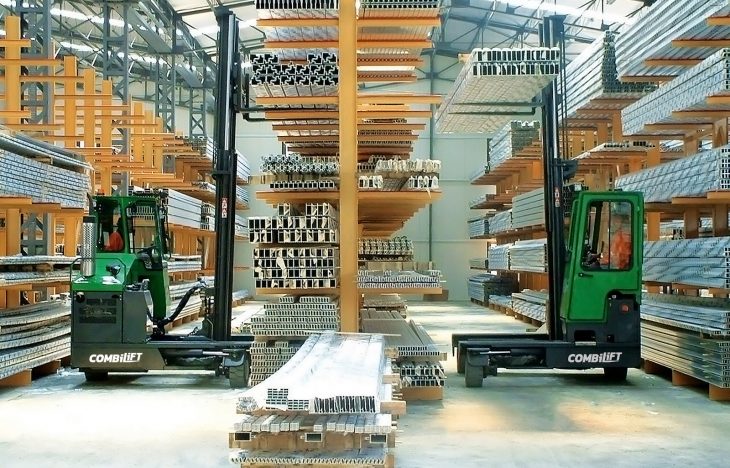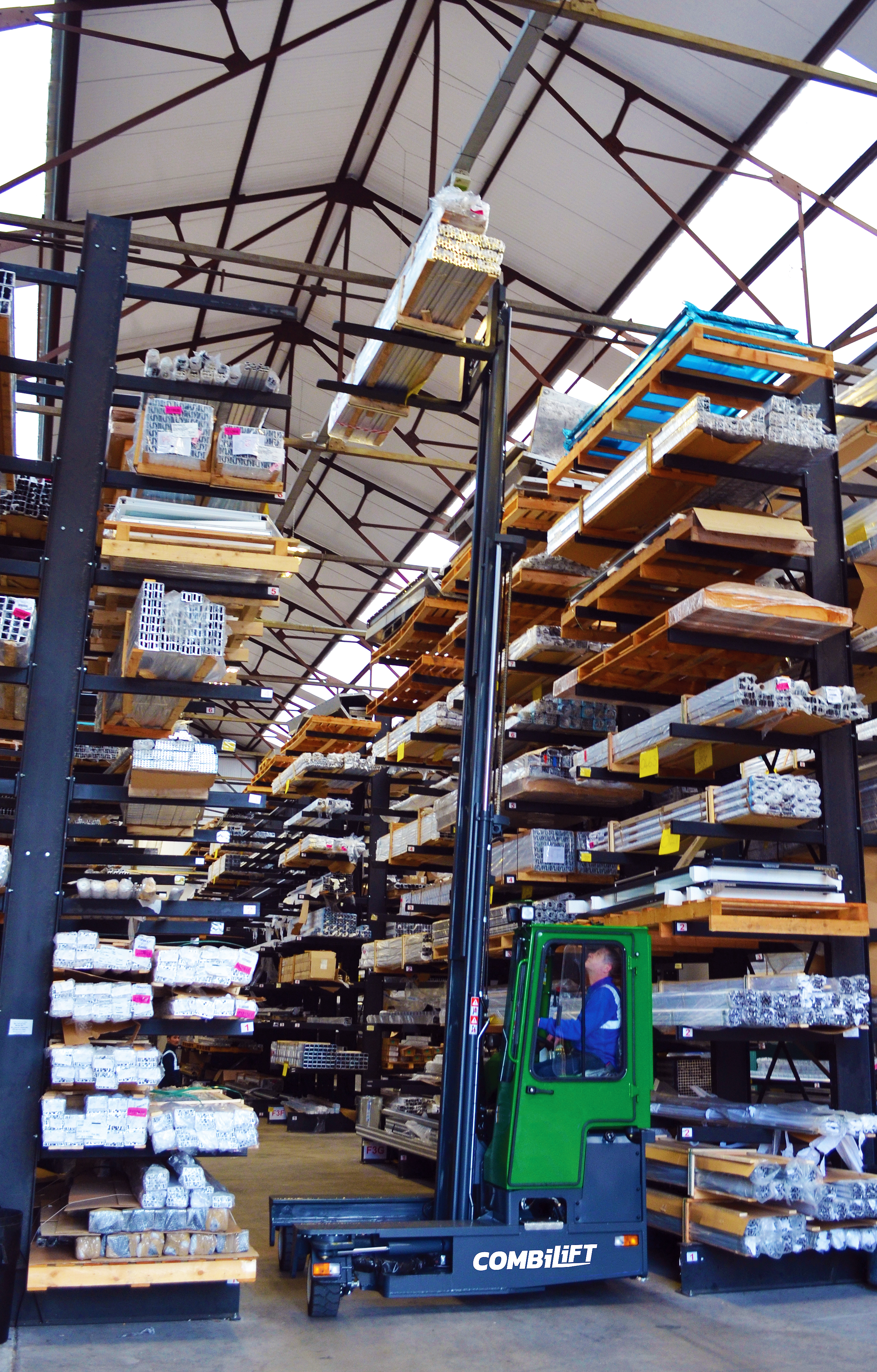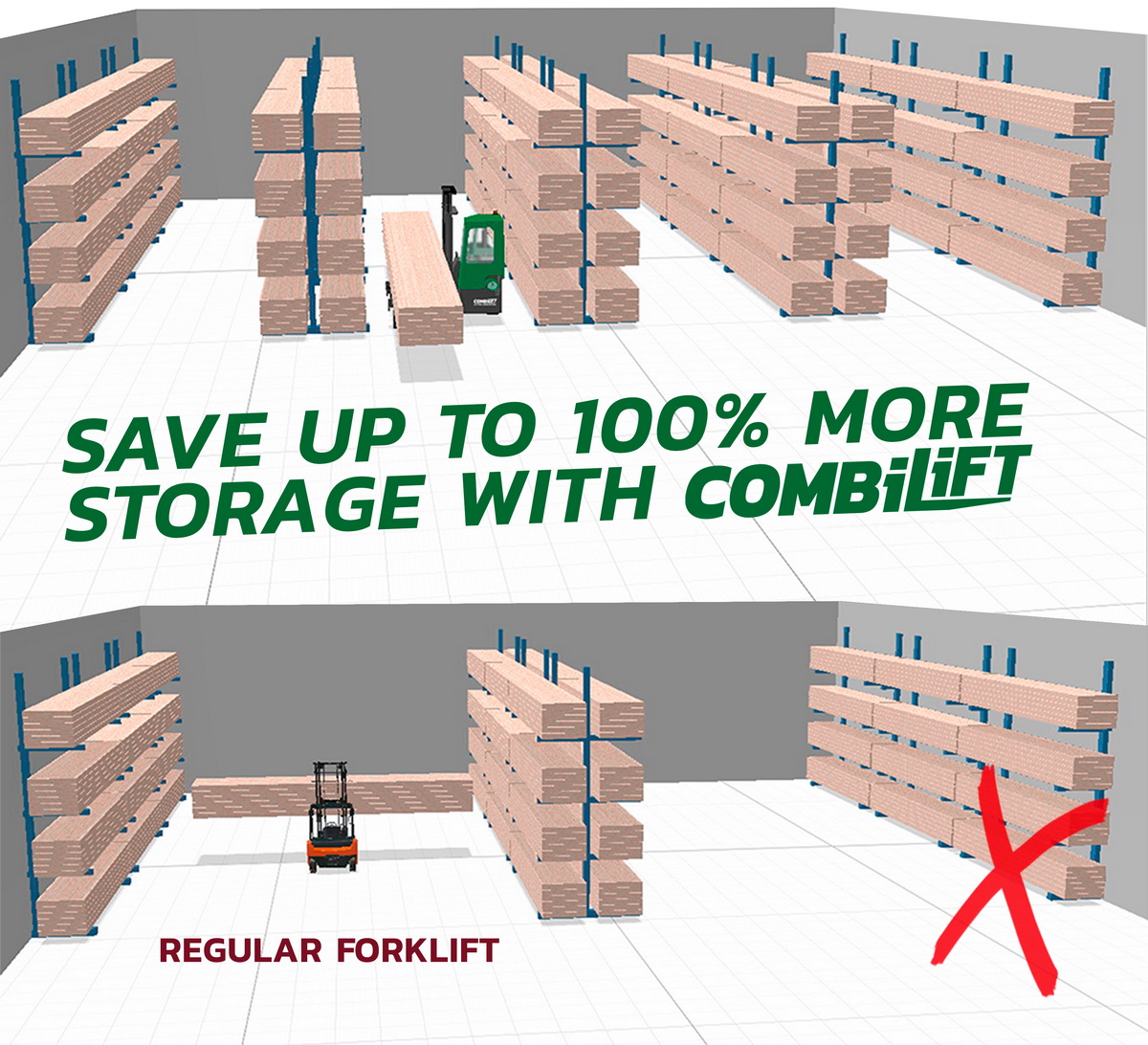Tuesday, June 9th was National Forklift Safety Day. To celebrate, Combilift in Monaghan, Ireland, is spreading the word about how their state-of-the-art products and services contribute to safer plants and warehouses. Traditional forklifts only move forward and back, but Combilift’s multi-directional trucks are able to move laterally to handle long aluminum loads in smaller spaces.
The Irish company offers a variety of trucks from pedestrian controlled all the way up to container loaders and straddle carriers for transferring extremely large products to a semi-truck with ease. “Combilift vehicles follow the long aluminum goods [all the way through the production chain] from the smelter, to the extruder to the distributor,” said Martin McVicar, CEO.
Carrying aluminum extrusions through a crowded warehouse looks like a breeze on a Combilift CB when compared to a traditional forklift (see video below). The CB is more compact, and since it can move sideways, the operator is able to carry long extrusions close to the ground, eliminating the need for an unsafe counter balance situation in which extrusions are carried high up. Operators driving traditional forklifts that can’t move laterally typically have to raise extruded pieces into the air to avoid the load crashing into products or coworkers. This situation is dangerous, but is unfortunately typical in crowded plants and warehouses.
The ability to move long extrusions (or loads) close to the ground also reduces the risk of product damage. Since the operator does not need to spend any time maneuvering back and forth to position the load, the easy-to-use multi-directional CB is also able to accomplish the same task in less than half the time as the traditional forklift. Consequently, the Combilift CB is safer, faster, and increases productivity for long load moving.
Combilift’s in-house engineering team works closely with aluminum companies to ensure that their products meet customer’s individual plant and/or warehouse needs. The engineers take every variable into account – warehouse size, aisle width, load size and type, external terrain, climate, and even the physical characteristics of the operator. According to the company, the only time they make two identical forklifts are when a customer loves their first one so much, they order another.
Warehouse Optimization System
Responding to the ever-changing needs of the customer permeates every area of their business. Their free warehouse planning consultancy service is available to help visualize the potential Combilift can bring to optimizing within a warehouse’s existing facility.
“Our free warehouse design service has been a great tool for resolving problems for customers and enabling them to maximize warehouse space,” said McVicar, “and now we have developed a virtual site survey in-house system.”
The system has been extremely helpful for many during this time of COVID-19 regulations where many things need to be done remotely.
“As most owners and managers are not traveling at the moment we can get a quick turnaround of this service, too. Using technology such as MS Teams and Google maps we have found that this can give us even more accurate data than before for warehouse and yard areas,” said McVicar.
Many aluminum producers are following social distancing protocols, and Combilift can help achieve this by showing them a simulated solution that can free up the most space with the minimum amount of disruption before they invest in new equipment.



